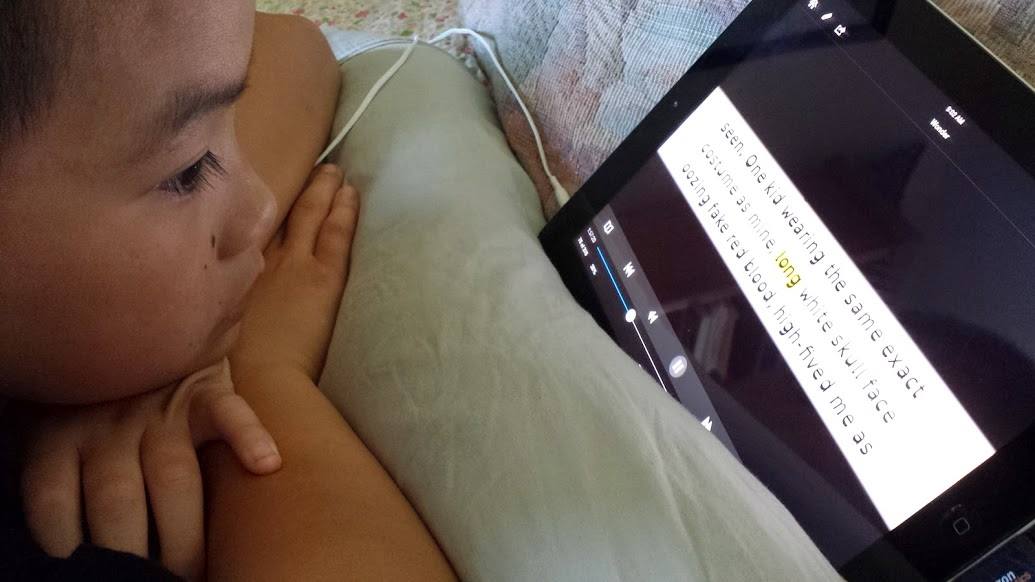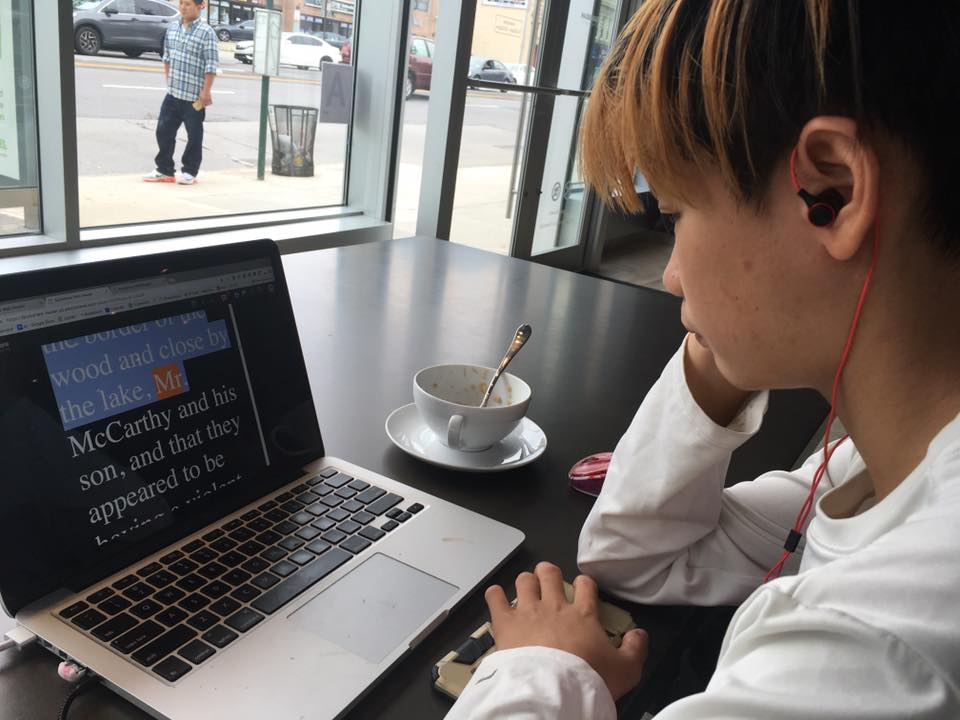High Tech Help For Kids With Disabilities

Writing, notetaking, and annotating texts are challenges that can be ameliorated with the use of technology. This student is taking notes while comparing high schools. Photo credit: Jenn Choi
Can your dyslexic child read grade-level books at 200 words per minute? Can your dysgraphic child write her reading response with enough supportive details? Can your disorganized child turn in homework on time without reminders? With assistive technology, students with disabilities are now able to participate in their education on the most leveled playing field they have ever seen.
Assistive technology (AT) goes beyond iPads and computers. It includes devices and services designed to help students gain access to parts of the school curriculum that weren’t available to them before because of a disability.

Students can read age-appropriate books by using tech to read aloud to them. This student is using Voice Dream, an app found on Androids and iPads. Photo credit: Jenn Choi
One of the most common disabilities is dyslexia, otherwise known as Learning Disability with impairment in reading. Students with dyslexia struggle to decode (or sound out words) and are often stuck reading books that are far below their maturity level. Moreover, as they fall further behind, the number of books they actually want to read diminishes exponentially until the love of reading completely disappears. This is why it’s important to introduce AT early. These programs allows students to listen to a text read aloud, so they can read what their peers are reading while still learning to decode. Click here to watch popular reading AT programs in action.

Through Bookshare.org, Dyslexic students are able to access free digital books that range from school textbooks, daily newspapers, and novels. Photo credit: Jenn Choi
Writing is another area of struggle that causes tremendous frustration for many students. Some students are unable to write with a pencil (a disability known as dysgraphia) but can dictate rich thoughts. However, some students' disabilities manifest as not being able either to write or to speak full coherent sentences that are required for schoolwork. This disability is commonly described as Learning Disability with impairment in written expression.
In both cases, technology can have a significant impact. Working on a digital platform such as Google Classroom helps students organize their thoughts and facilitates constructive feedback from teachers and other students. “To write an essay, a five paragraph essay, it takes a ton of time, a lot of planning, a lot of gathering quotes,” says Devin Fitzgibbons, an assistant principal at Quest to Learn, “Google Classroom helps them keep track of all that and saves all their work.”
As with reading, it's important to start using AT for writing early on because there are many tools to master such as word-prediction, spell check, computer read-back to edit, voice-typing, and grammar check. Using technology, even 1st graders can write on top of the same worksheets that their fellow students are using. For older kids, writing goes beyond sentences and essays. Writing is critical to notetaking, a core skill required for high school and college success.
Using technology, this student can write in four different ways, copy-pasting, typing, drawing with one finger, and speaking. Photo credit: Jenn Choi
Lastly, organization is a skill that challenges many students. Some students' inability to be organized and stay motivated results in utter failure at school. There are a plethora of apps and tools ranging from a simple Time Timer to help students manage their motivation to something as easy as emailing the homework to your teacher because you always forget to hand it in.
Getting Started
Students can seek evaluations provided by the Center of Assistive Technology at New York City Department of Education. Parents have the right to request an AT evaluation to determine if their child has a disability and is eligible to receive AT services. However, whether or not your child is found eligible, it is wise for students with learning and organizational challenges to attend tech-savvy schools whose teachers already use productivity tools such as Google Classroom. Some of the schools I’ve found to have a productive tech culture are M.S. 442 in Brooklyn, Bard High School Early College Queens, Quest to Learn, Townsend Harris High School and Special Music School. The digital culture at these schools supports Universal Design for Learning making the curriculum more accessible to all including students with disabilities.
Jenn Choi is a special education advocate and assistive technology coach at Special Support Services
Please Post Comments